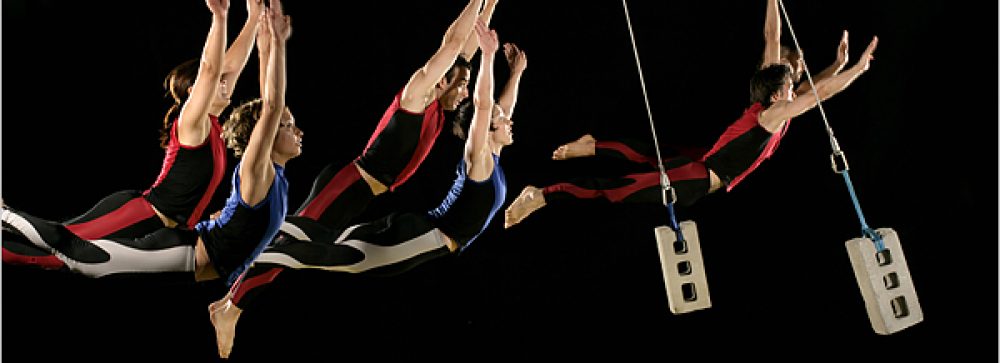In 1975, Elizabeth Streb relocated to New York City with no practical skills and only four hundred dollars in her bank account. Despite having no work experience, Streb was able to secure a job as a cook, something that came to her naturally. Later on, she launched STREB/ Ringside, her first dance company. Streb’s work was powerful and abrasive. Soon, she caught the attention of the New York Times, which featured a piece on the choreographer describing her routine as witty. To date, Elizabeth Streb still treasures this high praise.
Born To Fly fundamentally focuses on Elizabeth Streb, but also gives a glimpse of the dancers she taught. In an industry as small and focused as its own, it immediately becomes apparent that Streb’s students are drawn to her like a progressive, spikey-haired Mother Hen. The film features a background of the people showcased in order that the viewers might learn what drove the dancers to do what they do and why they are determined to keep on despite the challenges associated with such high standards.
The choreographer herself might be modest enough or reluctant not to refer to it as a movement, but her instituted “pop action” is an impressive and usually terrifying sequence of feats. We witness rehearsals where the performers duck beneath a rotating steel beam rhythmically. Every couple of seconds narrowly escaping fast and direct impact, no performer seems like they would rather be anyplace else. Some routines culminate in propelling via a glass plate, horrifying and masterful. On behalf of the squeamish, you will cover your eyes as many times viewing this as you would in a run-of-the-mill slasher film (or at the horror of paying off a collections request). However, the good thing about Born To Fly is that there are stakes. A student narrates a harrowing story that would easily make you question whether the nobility of the cause is justified, but goddamn if the student’s positive outlook and perpetual optimism do not inspire.
The documentary culminates with 1 Extraordinary Day together with the 2012 London Olympic Games. In some of the performances, Elizabeth Streb alongside are seen bungee jumping from the Millenium Bridge and attaching themselves to every single EDF Energy London Eye spoke. Streb’s dances are equally exhilarating, and the audience is well enamored. Born To Fly is a great film for people who are not familiar with Elizabeth Streb and her great accomplishments as well as those who are. Some audiences might consider the documentary uncompromising and fawning in its apparent love for the meticulous choreographer. Once you watch Born To Fly you also become drenched in love for Elizabeth Streb and her contributions to dance.
Elizabeth Streb is not your common choreographer. Her work since the 1980s in New York has as much in common with Performance art and Cirque du Soleil-style acrobatic feats as with contemporary dance. Portraying how the sexagenarian with spiky hair has used to her advantage, Catherine Gund’s documentary film is a perfect maverick artistic sensibility portrait, even if it will make some audiences crave for more performance footage. Fest viewers will find Born To Fly both visceral and lively. Beyond fest, Television outlets that are art-minded will view the film as a natural fit.

